Reception
The album earned mostly negative reactions, with only a rewritten version of an outtake ("New Danville Girl'", retitled "Brownsville Girl") recorded during the Empire Burlesque sessions, receiving uniform praise. Robert Christgau called it "one of the greatest and most ridiculous of [Dylan's] great ridiculous epics."
"Knocked Out Loaded is ultimately a depressing affair," wrote Anthony DeCurtis in his review published in Rolling Stone magazine, "because its slipshod, patchwork nature suggests that Dylan released this LP not because he had anything in particular to say, but to cash in on his 1986 tour. Even worse, it suggests Dylan's utter lack of artistic direction." In the Howard Sounes book Down the Highway: The Life of Bob Dylan, it is reported that Dylan said "if the records I'm making only sell a certain amount anyway, then why should I take so long putting them together?"
Dylan has played few songs from this album in concert; "Driftin' Too Far from Shore", with 14 performances (all but one in 1988), is the most frequently performed. Four songs remain unplayed, while the other three have together been aired only five times.
In recent years the album has gained a cult following among some Dylan fans who believe it is one of his least-understood works, [9] but critical consensus remains negative, with recent reviews from Salon.com to Rolling Stone calling it a "career-killer" and "the absolute bottom of the Dylan barrel" respectively.
The album was remastered and re-issued in 2013 as a part of The Complete Albums Collection, Vol. One box set.

Highway 61 Revisited is the sixth studio album by American singer-songwriter Bob Dylan, released on August 30, 1965, by Columbia Records. Having until then recorded mostly acoustic music, Dylan used rock musicians as his backing band on every track of the album, except for the closing track, the 11-minute ballad "Desolation Row". Critics have focused on the innovative way Dylan combined driving, blues-based music with the subtlety of poetry to create songs that captured the political and cultural chaos of contemporary America. Author Michael Gray has argued that, in an important sense, the 1960s "started" with this album.

Electric Ladyland is the third and final studio album by the Jimi Hendrix Experience, released before Hendrix's death in 1970. A double album, it was the only record from the Experience with production solely credited to Hendrix. The band's most commercially successful release and its only number one album, it was released by Reprise Records in the United States on October 16, 1968, and by Track Records in the UK nine days later. By mid-November, it had reached number 1 on the U.S. charts, spending two weeks there. In the UK it peaked at number 6, where it spent 12 weeks on the chart.
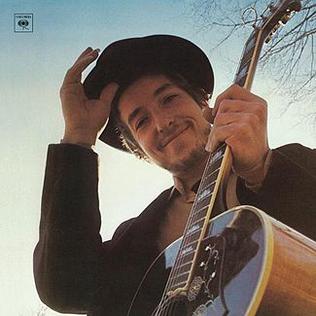
Nashville Skyline is the ninth studio album by American singer-songwriter Bob Dylan, released on April 9, 1969, by Columbia Records as LP record, reel to reel tape and audio cassette.
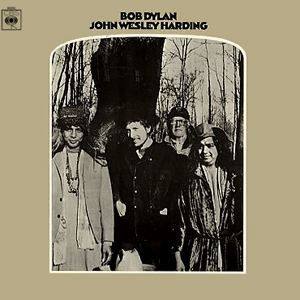
John Wesley Harding is the eighth studio album by American singer-songwriter Bob Dylan, released on December 17, 1967, by Columbia Records. Produced by Bob Johnston, the album marked Dylan's return to semi-acoustic instrumentation and folk-influenced songwriting after three albums of lyrically abstract, blues-indebted rock music. John Wesley Harding was recorded around the same time as the home recording sessions with The Band known as The Basement Tapes.

Slow Train Coming is the 19th studio album by American singer-songwriter Bob Dylan, released on August 20, 1979, by Columbia Records. It was Dylan's first album following his conversion to Christianity, and the songs either express personal faith, or stress the importance of Christian teachings and philosophy. The evangelical nature of the record alienated many of Dylan's existing fans; at the same time, many Christians were drawn into his fan base. Slow Train Coming was listed at No. 16 in the 2001 book CCM Presents: The 100 Greatest Albums in Christian Music.
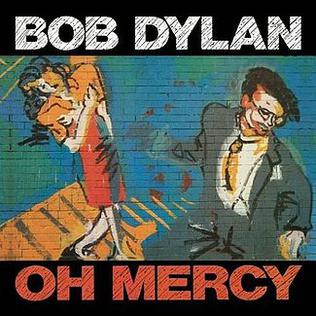
Oh Mercy is the 26th album by American singer-songwriter Bob Dylan, released on September 12, 1989, by Columbia Records. Produced by Daniel Lanois, it was hailed by critics as a triumph for Dylan, after a string of poorly reviewed albums. Oh Mercy gave Dylan his best chart showing in years, reaching No. 30 on the Billboard charts in the United States and No. 6 in the UK.
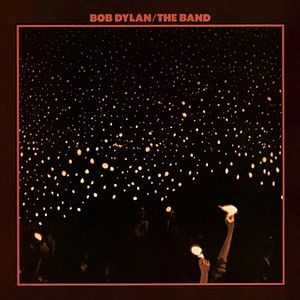
Before the Flood is a live album by American singer-songwriter Bob Dylan and the Band, released on June 20, 1974, on Asylum Records in the United States and Island Records in the United Kingdom. It was Dylan's first live album, although live recordings of earlier performances would later be released. It is the 15th album by Dylan and the seventh by the Band, and documents their joint 1974 American tour. It peaked at No. 3 on the Billboard 200, reached No. 8 on the popular album chart in the UK, and has been certified Platinum by the Recording Industry Association of America.

Dylan & the Dead is a collaborative live album by American singer-songwriter Bob Dylan and the Grateful Dead, released on February 6, 1989, by Columbia Records. The album consists of seven songs written and sung by Dylan, with the Grateful Dead providing accompaniment. The album was produced by Jerry Garcia and John Cutler.

Self Portrait is the tenth studio album by American singer-songwriter Bob Dylan, released on June 8, 1970, by Columbia Records.

Hard Rain is a live album by American singer-songwriter Bob Dylan, released on September 13, 1976 by Columbia Records. The album was recorded during the second leg of the Rolling Thunder Revue.

Bob Dylan at Budokan is a live album by American singer-songwriter Bob Dylan, released August 1978 on Columbia Records in Japan only, followed by a worldwide release in April 1979. It was recorded during his 1978 world tour and is composed mostly of the artist's "greatest hits". The performances in the album are radically altered from the originals, using the same musicians that played on Street-Legal, but relying on a much larger band and stronger use of brass and backing singers. In some respects the arrangements are more conventional than the original arrangements, for which the album was criticized. For a few critics, such as Janet Maslin of Rolling Stone, the differences between the older and newer arrangements had become less important.
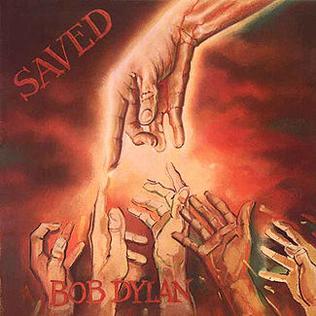
Saved is the 20th studio album by American singer-songwriter Bob Dylan, released on June 23, 1980, by Columbia Records. Saved was the second album of Dylan's "Christian trilogy". It expanded on themes explored on its predecessor Slow Train Coming, with gospel arrangements and lyrics extolling the importance of a strong personal faith.

Empire Burlesque is the 23rd studio album by American singer-songwriter Bob Dylan, released on June 10, 1985 on Columbia Records. Self-produced, the album peaked at No. 33 in the U.S. and No. 11 in the UK.

Down in the Groove is the 25th studio album by American singer-songwriter Bob Dylan, released on May 30, 1988 by Columbia Records.
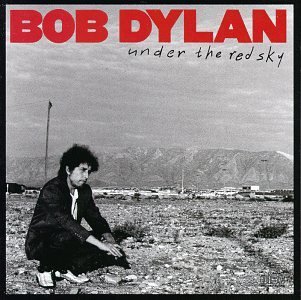
Under the Red Sky is the 27th studio album by American singer-songwriter Bob Dylan, released on September 10, 1990, by Columbia Records. It was produced by Don Was, David Was, and Dylan.

First Rays of the New Rising Sun is a compilation album credited to American rock musician Jimi Hendrix, issued in April 1997 on MCA Records. Featuring songs mostly intended for his planned fourth studio album, it was one of the first releases overseen by Experience Hendrix, the family company that took over management of his recording legacy. It reached the album charts in the United States, United Kingdom, and four other countries.
"Brownsville Girl" is a song from Bob Dylan's 1986 album, Knocked Out Loaded, recorded in May of that year. It is notable for its length, over 11 minutes, and for being co-written by playwright Sam Shepard. The song is a reworked version of a December 1984 outtake from the Empire Burlesque sessions entitled "New Danville Girl". It was anthologized on the compilation albums Bob Dylan's Greatest Hits Volume 3 in 1994 and Dylan in 2007.
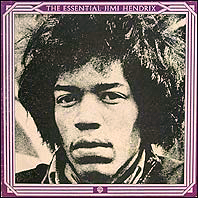
The Essential Jimi Hendrix is a compilation album of songs by American rock musician Jimi Hendrix, released in 1978 by Reprise Records. Some editions in the UK, Japan and Italy also contained a 7-inch 331⁄3 rpm one-sided EP single of the Jimi Hendrix Experience performing the song "Gloria".

Radio One is a live album by The Jimi Hendrix Experience. It was released posthumously in November 1988 by Rykodisc and compiles tracks recorded between February and December 1967 for broadcasts by BBC Radio. The album peaked at number 30 on the UK Albums Chart, while in the United States, it charted at number 119 on the Billboard 200. After Hendrix's family gained control of his legacy, Radio One was supplanted by the more comprehensive BBC Sessions in 1998.
Curtis Knight and the Squires were a New York band that was fronted by singer and guitarist Curtis Knight in the mid-1960s. Both Jimi Hendrix and sax player Lonnie Youngblood were members for a while.


















